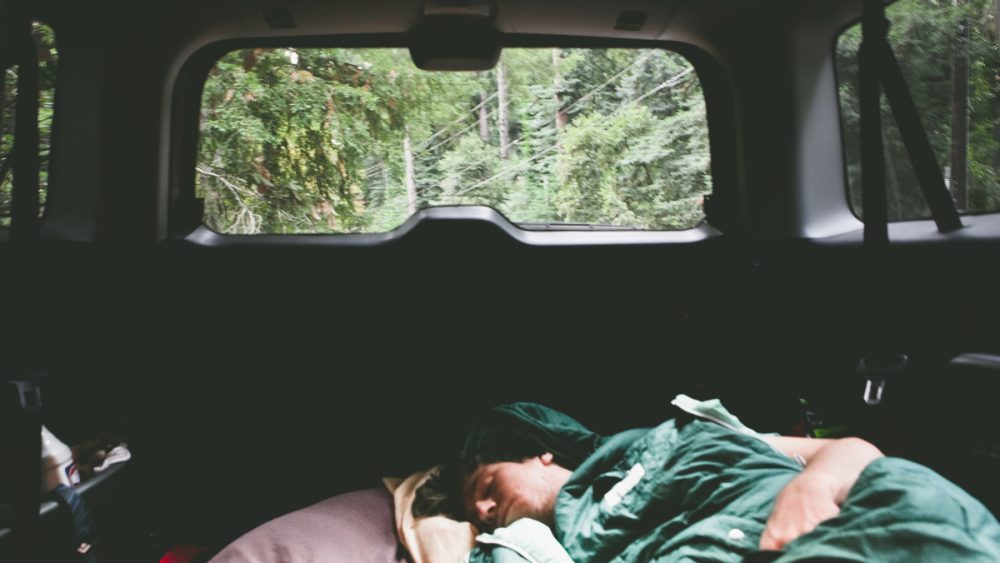Homelessness is a bigger problem than you think
Media stereotypes and laziness misrepresent life on the streets
As soon as the temperature drops every year, the media and public suddenly become interested in people who are homeless. It’s as if a switch is hit. The lights come on and ‘the homeless’ immediately become the focus of our moral concern.
This winter occurrence is as regular as warnings about impending bushfires in spring and shark sightings in summer.
The reality is that homeless people are with us throughout the year
The media then works itself into a lather about the ‘plight of the homeless’ and the sad facts about ‘life on the streets’. Celebrities make ‘real life documentaries’ and CEOs sleep out in cardboard boxes. It all makes great footage for the evening news.
People who are homeless do need our compassion and care but the reality is that homeless people are with us throughout the year – and the overwhelming majority do not live rough. Of Australia’s 105,000 homeless people, less than one in ten live on the streets. It’s still a disgrace that anyone should be left with such an option but it does skew our perceptions of homelessness. Most people are couch surfing, sleeping on the lounge room floor of a family member or friend, in a garage, caravan or boarding house. Some would not even call themselves homeless because they have a roof over their heads.
Our perceptions of people who are homeless can also be attributed to media stereotypes.
As Public Affairs Manager of Wesley Mission in Sydney, I was asked during a radio interview several years ago about why the New South Wales coastal town of Port Stephens had a higher concentration of homeless people than neighbouring Newcastle. The answer is straightforward: Port Stephens is a tourist centre containing camping areas for caravans and tents. Public toilets and showers are nearby as well as take away food that can feed a family. It is also safer than the inner streets of a major regional city.
Our perceptions of people who are homeless can also be attributed to media stereotypes. People sleeping in doorways and parks are highly visible, especially to young journalists who live within a few kilometres of our city centres and major media newsrooms.
Genres and icons of homelessness in Australia are historical: it all began back in the 1970s and 1980s when TV crews rode side-saddle on charity vans, documenting ‘the homeless’ as they were rescued, fed and clothed on ‘struggle street’. In many respects, this genre has not evolved to reflect the diverse experiences of 2017.
More than 90,000 homeless Australians live in unstable and unsuitable accommodation
When Wesley Mission in Sydney conducted research on homeless people residing in inner-city shelters, it found that almost three in four came from the suburbs or regional areas – not the inner-city. In the warmer months, interest in our inner-city ‘mean streets’ declines, only to reappear at Christmas when people line up to serve lunch to people who are homeless.
Interest in this type of service has such appeal that volunteer needs for Christmas lunch with Wesley Mission in Sydney are filled many months before the day. When we break the news that our books are full, we encourage people to consider visiting a lonely older Australian on Christmas Day. But Wesley Mission has found that follow-up phone calls with those volunteers are usually terminated and e-mails ignored.
Such a response underlines the strength of the popular predisposition that the only truly homeless people are those who sleep rough or reside in emergency shelters. This is dangerous for several reasons: it perpetuates the myth that only people living on the streets are deserving of our support, while ignoring the fact that more than 90,000 homeless Australians live in unstable and unsuitable accommodation – with little or no possibility of cracking the private rental market or social housing.
“Give me mum, dad and two kids living in a car in Penrith – that’s homelessness.”
We also begin ascribing social and cultural characteristics to ‘the homeless’ that eventually guide our responses to the problem. It saddens me that in recent years an almost obsessive romanticism has developed leading to the objectification of rough sleepers, with its logical conclusion culminating in a reality TV show starring the kids of the rich and famous. It can calibrate public opinion, what resources are used and what policy settings are made.
When Wesley Mission in Sydney released one of its many reports on homelessness, a young man who had moved into stable accommodation and turned his life around shared his story at a news conference. He was available to be filmed in places he once frequented and his new accommodation. The TV news networks ignored his journey but instead headed to an inner-city location where people were sleeping rough – they were iconic media symbols of homelessness but not the defining reality of its population. Reporters were under instruction not to return to the newsroom without ‘the real stuff’ or the story would not be run.
A few years ago, an Australian Council of Social Service conference for media people from the community services sector met in Sydney. A panel discussion with leading mainstream media discussed how the sector could pitch stories. A prominent radio commentator pronounced: “Give me mum, dad and two kids living in a car in Penrith – that’s homelessness.” You can see the concept being Exhibit A at a morning news conference and applauding acolytes devouring the idea.
…The desire to take short cuts … will only increase.
The experience of homeless people is far more nuanced and complex than the cultural stereotypes. While high rents and inadequate social housing provide the underlying current in our nation, domestic violence, substance abuse and mental health are the constant flotsam carried on the surface.
Sole parent families fleeing domestic violence is the growing group in our homeless population. A safe space where a door can be locked was the number one need identified in a Wesley Mission study by people experiencing homelessness. Food and shelter were given great marks but safety and other wrap-around services that create well-being rated higher on the need scale.
When I worked on the sports section of a newspaper, I was always told never to run a rugby league photo without the ball being clearly visible. In time-pressed newsrooms, you need a visual cliché to make editorial and photographic judgments. Studies of media coverage in Australia and overseas show that photographs of a single male person living on the streets overwhelmingly dominate news libraries and files. Given the newsroom revolution and multiple deadlines across several platforms, the desire to take short cuts and to fall back on old yardsticks will only increase.
Much more needs to be done.
Much has been done to deal with reforming the reporting of suicide and mental health in Australia by the pioneering work of the Hunter Institute. Photographic stereotypes, media discourse and language now have workable and practical guidelines. Inroads are being made on media treatment of older Australians and people dealing with dementia. Much more needs to be done.
Wesley Mission in Sydney is a Christian organisation and Christians demand that the truth remains paramount. People who follow Jesus seek integrity and justice because we are people of grace. We know what it is like to be loved and truly known by God in both heart and mind. If we have this truth, it is incumbent upon us to ensure that truth is evident in how we treat and portray others. We can all cut corners for the sake of partiality, brevity and deadline but by doing so, we can diminish a person made in the image of God. This is part of our fallen nature.
We feel passion and even outrage when the things of God and our own Christian faith are misrepresented in the public space. It should be no different for us when the experience of the most vulnerable in our community is weakened or belied. We follow a God who cares about the small details and the real truth for our lives. Hairs on our heads are counted, birds don’t fall from the sky without God’s knowledge and God tells us that we are even the apple of his eye.
Graeme Cole is Public Affairs Manager at Wesley Mission in Sydney, and winner of the 2016 ARPA Gutenberg Award for religious journalism.




